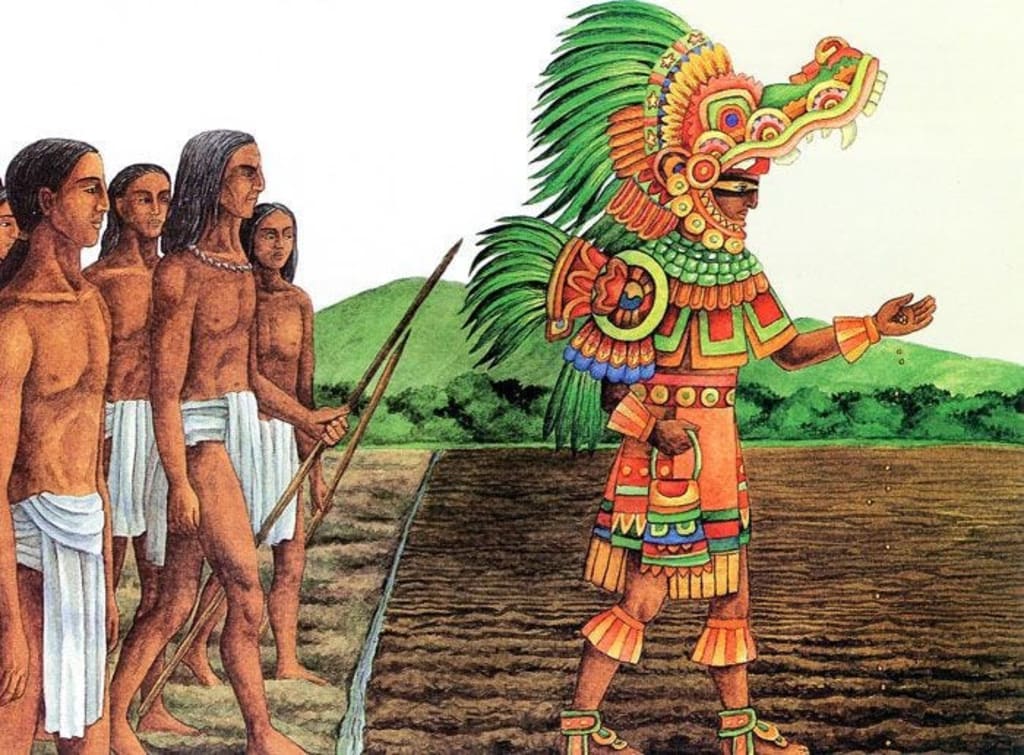The wild history of human sacrifice
Wacky world of ancient human sacrifice

Human sacrifice has been a thing for ages. Whether it's to please a king, gods, or just to get rid of a pesky neighbor, one thing's for sure: a good ol' heart-stealing, skull-splitting sacrifice gets the job done. Let's take a look at how different societies used to willingly lower their population for what they thought was the greater good.
Imagine serving a Pharaoh all your life, thinking you're finally free when he kicks the bucket. But nope, turns out you're handpicked to serve him in the afterlife. Talk about a bummer. Since Pharaohs were seen as gods in human form, they needed loads of servants. Some even volunteered to be sacrificed to serve their Pharaoh forever. Creepy, right?
The Egyptians believed in an afterlife where you could keep doing what you do without worrying about dying. Pharaohs didn't want to do things themselves in the afterlife, so they arranged for servants or family members to join them. Evidence shows these people willingly gave their lives as a sign of devotion. They were buried without signs of struggle, suggesting they did it willingly.
Retainer sacrifices were rare and mainly seen in ancient Egypt, but other cultures like the Sumerians and Chinese did it too. As time passed, the practice faded. Maybe because people realized they didn't have to volunteer.
Japan had its own weird tradition called hitobashira, or human pillar. It was a way to bring good luck to construction projects. People believed disturbing the Earth would upset local spirits, so sacrifices were made to protect the structures from bad juju.
The Mayans were big on human sacrifices too. They did it to please the gods and solve problems like droughts or famine. They got pretty creative with how they did it, from cutting hearts out to lobbing heads off.
The Aztecs were similar, sacrificing thousands to please the gods. They even did it during big events like reconsecrating their Great Pyramid.
Greece had its dark moments too. When times got tough, they'd pick someone to blame and sacrifice them to purify the community. They called it pharmacos, and it wasn't pretty.
Hindu women used to sacrifice themselves when their husbands died. It was seen as the ultimate devotion. They'd either lay next to their husband's funeral pyre or jump on it as it burned. Pretty intense, right?
Thankfully, many of these practices are history. But sacrifices still happen today, like sacrificing time to watch videos (like this one) and sacrificing sanity to make them. That's life, I guess.
Human sacrifice has been a part of many societies throughout history, each with its own reasons and methods. For example, the ancient Egyptians believed in an afterlife where servants were needed to tend to the needs of the Pharaoh even in death. So, they willingly sacrificed themselves to accompany their ruler into eternity.
In Japan, sacrifices were made to ensure the success of construction projects, with people believing that disturbing the Earth would anger local spirits. These sacrifices were seen as guardians for the structures against supernatural forces.
The Mayans and Aztecs performed sacrifices to please their gods and solve pressing issues like famine or drought. They believed that offering human lives would ensure the favor of their deities and bring prosperity to their communities.
Even in Greece, sacrifices were made to purify the community during times of hardship, with scapegoats being chosen to bear the blame for misfortunes.
Hindu widows practiced Sati, sacrificing themselves on their husbands' funeral pyres as a demonstration of ultimate devotion. This tradition persisted for centuries, fueled by societal pressure and beliefs about a woman's role in society.
While many of these practices are considered barbaric by today's standards, they offer insight into the beliefs and values of ancient cultures. Thankfully, most societies have moved away from such extreme forms of sacrifice, recognizing them as inhumane and unnecessary. Yet, sacrifices continue in various forms, whether it's sacrificing time for a cause or making personal sacrifices for the greater good.





Comments
There are no comments for this story
Be the first to respond and start the conversation.